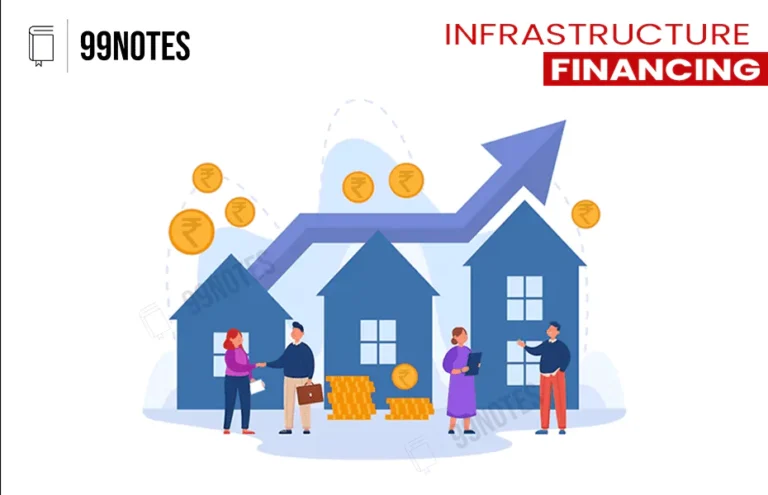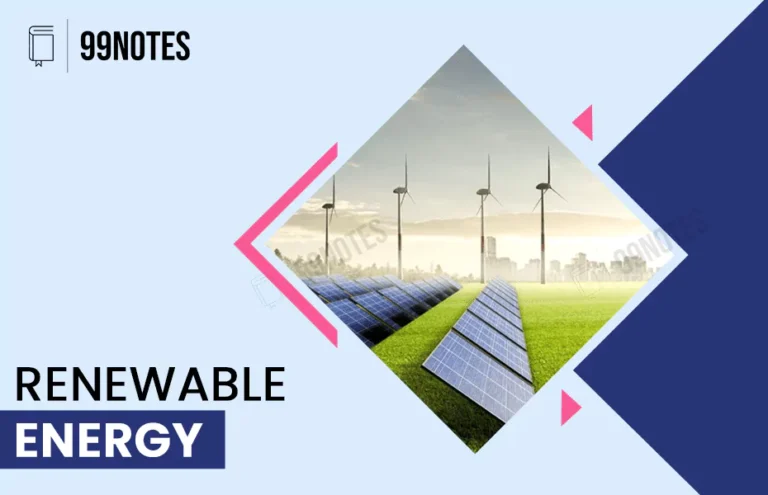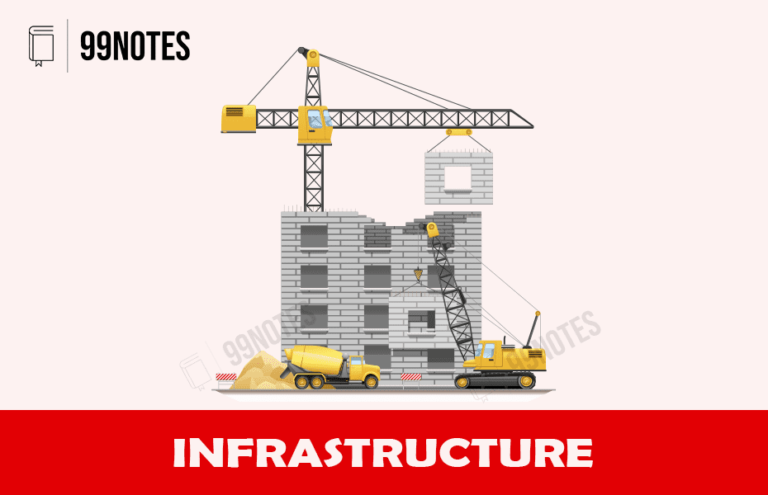What is Social Infrastructure: Meaning, Importance & Challenges [UPSC Notes]
What is Social Infrastructure?
Meaning of Social Infrastructure is to creating and maintaining facilities and structures that support the delivery of social services, which are essential for social development and, thereby, the overall development of a country.
Social Infrastructure is the set of organizational arrangements and investments in society’s systems, relationships, and structures that enable us to generate a just, equitable, more resilient, and sustainable world. It comprises social, economic, environmental and cultural assets.
For example, the more the number of public schools, the more equitable shall be the economic opportunities in society. More the number of public parks healthier the society will be. Such parks and schools shall also act as cultural assets for society creating public relationships.![What Is Social Infrastructure: Meaning, Importance &Amp; Challenges [Upsc Notes] | Updated July 27, 2024 Social Infrastructure Tree Map - By 99Notes](https://99notes.in/wp-content/uploads/2023/05/social-infrastructure-99notes-upsc-1024x996.jpg)
Thus, Social Infrastructure can be defined as a system that creates a social safety net by providing health, education, public services and recreation.
Therefore, a robust social infrastructure customised to the country’s diversity and citizens’ unique needs can ensure the availability of quality employment opportunities for our large demography, which holds potential for long-term sustainable growth during Amrit Kal.
Social Infrastructure
- Economic, physical, and social infrastructures are interrelated components for holistic and sustainable community development.
- Social Infrastructure is often a combination of tanwgible and intangible assets that facilitates the development of society.
- The Social Infrastructure includes the physical Infrastructure, human resources, and intellectual capital needed to render social services.
![What Is Social Infrastructure: Meaning, Importance &Amp; Challenges [Upsc Notes] | Updated July 27, 2024 Social Infrastructure Of A School- Upsc Notes By 99Notes](https://99notes.in/wp-content/uploads/2023/05/social-infrastructure-school-99notes-upsc.jpg)
Let’s understand this with an example of a school.
Importance of Social Infrastructure:
Social Infrastructure creates various positive externalities:
- Human development – Reduce poverty and inequality. Expansion of opportunities and choices of people.
- Economic growth – Social Infrastructure forms the foundational services and structures that contribute to economic development through increased income, better productivity, and technological advancement.
- Better Quality of life – It includes policies, programmes, projects, schemes, and services of the government, and also the network of facilities, spaces, institutions and groups aimed at increasing the quality of life and living standard of the people.
- Productive efficiency of human resources – An economy with better health and skill level is more productive.
- Inclusive growth – Social Infrastructure plays a pivotal role in promoting equality and inclusive growth.
- Better resource utilisation & Sustainable development – Lower poverty level, a healthy environment and an educated society are core dimensions of sustainable growth.
Therefore, good and adequate social Infrastructure is the key to achieving progressive communities.
It is for this reason that after the 1991 reforms, the development of social Infrastructure has become a key priority of the government to ensure that the benefits of fast-paced growth unleashed by the reforms also reach the vulnerable and marginalised sections of society and the underdeveloped regions of the country.
Development of Social Infrastructure
Social Infrastructure, traditionally, has been developed mainly by the government. However, social infrastructure development and provisioning are well-suited for public-private partnerships (PPP).
Status of India in terms of Social Infrastructure
- India ranked 132 out of 191 countries on the UNDP’s Human Development Index
- Gender Inequality Report: India ranked 122 in 2021.
- Multidimensional Poverty of India:
- 16.4% of Indians are multidimensionally poor.
- 18.7% are vulnerable to multidimensional poverty.
- The intensity of deprivation is 42%.
- India has an MPI score of 0.069.
- Basic facilities such as toilets (girls or boys), drinking water, and handwashing facilities have improved and are available in most government schools.
- There has been improvement in most of the health indicators between NFHS-4 (2015-16) and NFHS-5 (2019-21). However, performance in obesity has declined for all age groups, including children and adults.
- Government health expenditure (GHE) as a share of GDP is 1.3% in FY19.
Challenges
| Health Infrastructure |
|
| Education infrastructure |
|
| Housing |
|
Initiatives taken by government to developer Social Infrastructure
The government has been instrumental in the development of the social Infrastructure.
| New Approaches |
|
| Technology Powering the Social Infrastructure. |
|
| Networks |
|
| Health infrastructure |
|
| Education Infrastructure |
|
| Housing |
|
| Others |
|
Difference between Social and Physical Infrastructure
| Physical Infrastructure | Social Infrastructure | |
| Type of Development | Physical Infrastructure includes all the facilities and structures that directly improve economic development (i.e. production and distribution). | Social Infrastructure includes all the services that lead to human resource development. |
| Tangibility | Physical Infrastructure is always a tangible physical object. | Social Infrastructure can be both tangible, like hospital buildings, but also intangible such as a cooperative society. |
| Return on Investment | Physical Infrastructure is a quick way to boost economic growth. | Social Infrastructure lays the foundation for the long-term development of the nation. For example, IITs made 70 years ago prove to be beneficial assets today. |
| Example | For example, electricity distribution network. | The schools, colleges and hospitals etc. |
Way Forward
- Long-term PPP can be used to develop social Infrastructure sustainably.
- Citizen participation in the creation and management of social Infrastructure.
- Creating awareness among citizens about their right to basic infrastructure (ex: spacious classrooms, playgrounds, drinking water facilities, electricity, etc.) can institute a citizen-led system of checks and balances vis-à-vis the government.
- Healthcare and Education:
- Increasing public expenditure on public health and education infrastructure to correct the skew in the distribution of the healthcare infrastructure.
- Use technology to map healthcare and education infrastructure needs and assess their performance.
- Housing:
- Efficient use of land – by releasing the land lying idle with various sick/loss-making public-sector undertakings (PSUs) of the central/ state governments, focusing on vertical growth, relaxing floor space index norms etc.
- Rationalising regulatory complexities about housing projects.
- Sustained public expenditure on the social sector.
- The health sector public spending should match the mandated target of 2.5% of the GDP under the National Health Policy 2017.
- The education sector spending has been stagnant over the last five years. Increased spending in the sector is required to make education affordable, inclusive, and accessible. In addition, a more decentralised approach to financing can be explored.

![What Is Social Infrastructure: Meaning, Importance &Amp; Challenges [Upsc Notes] | Updated July 27, 2024 Everything You Need To Know About Social Infrastructure](https://99notes.in/wp-content/uploads/2023/05/social-infrastructure-99notes-upsc-1.webp)
![What Is Social Infrastructure: Meaning, Importance &Amp; Challenges [Upsc Notes] | Updated July 27, 2024 Everything You Need To Know About Social Infrastructure](https://99notes.in/wp-content/uploads/2022/10/image-2024-03-20t111546672-1-6602a62baabc1.webp)
![What Is Social Infrastructure: Meaning, Importance &Amp; Challenges [Upsc Notes] | Updated July 27, 2024 Everything You Need To Know About Social Infrastructure](https://99notes.in/wp-content/uploads/2022/10/image-2024-03-20t111540593-1-6602a62c944b9.webp)





